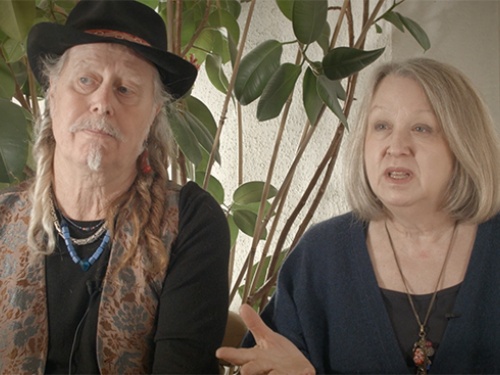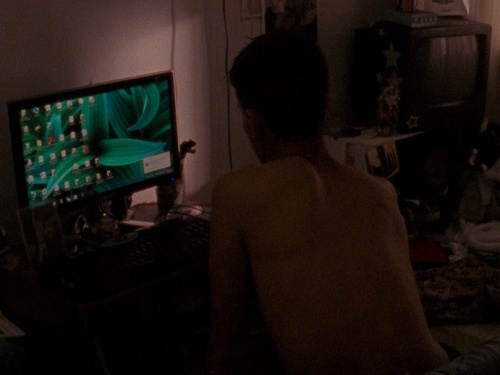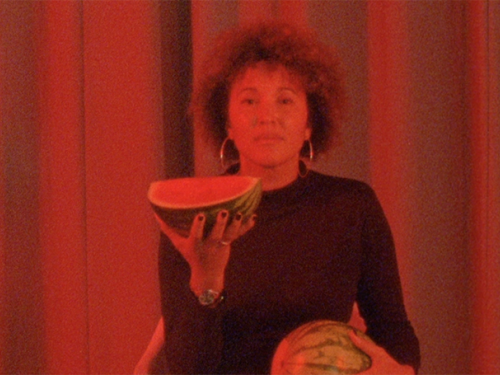Allegorically ‘The Birds’: A Q&A With Suky Best
Alfred Hitchcock The Birds brought Daphne du Maurier's 1952 novella to terrifying life; his sinister avian terrorists are second only to his marriage of violins and shower curtains in our shared cultural consciousness. What makes birds such effective agents of fear, and how might they act as stand-ins for the malevolence of humankind? And how has the history of birds in film affected our reactions to their presence, both in the cinema and out in nature? Artist Suky Best has made it her mission to examine these questions: she will be introducing a special screening of The Birds here at the ICA, where she will explain her ongoing fascination with the subject. To set the stage for this event, Jo Blair caught up with Suky and asked her a few questions for the ICA Blog.
Jo Blair: As Xan Brooks points out, there are different theories on the presence of the birds in Hitchcock’s film -– the most frequent interpretations seeing them as a ‘manifestation of sex’ or an ‘eruption of rage’. What’s your view?
Suky Best: There are so many theories about The Birds, it’s hard to know where to start. When I first began to study the film, I enjoyed the theories that the birds were a manifestation of Lydia’s fear of abandonment. As she is the only central character who doesn’t get attacked this is a possible explanation.
Certainly the women can be seen as being strongly aligned with the birds, both visually and symbolically. In the first scene in the pet shop, both Melanie and Mrs MacGruder are dressed in black and white, like the flocking swirling birds that Melanie first sees outside on the street. Much emphasis is placed on her high heels and long fingernails, like claws and talons, an extension of her dangerous limbs. Her mannerisms are birdlike, her head cocked to one side as she speaks or considers a question. Later in the film, once she has bought the lovebirds, Melanie’s outfit is exactly the same colour as their plumage. This is fully revealed once she takes off her fur coat when inside the Brenner’s house for dinner. She is a lovebird. And in the small boat when Mitch comes to her rescue after a gull attacks her, his trousers are also the same lovebird green. This symbolic alignment is also implied by the term birds as slang for women, more English than American, but Hitchcock would have made use of this double meaning of this disparate group of women—the birds—all competing for the attention of one man.
In ancient Greek and Roman mythology, harpies were half-bird, half-female carnivorous monsters. And I think that underlying the text of the film is a strong element of misogyny. I love this film but am always troubled by the way that all the women—apart from Mrs Bundy, who is a mannish woman—are depicted. They are hopeless, incompetent and utterly dependent on the men around them. When Mitch catches the escaped bird in the scene in the pet shop not only is the women’s incompetence revealed, but he is shown to be a bird catcher, and his role as the pivot for all the major women characters to revolve around is established.
The Birds was made just after Psycho, and the latter film is also full of birds. The two films work as a pair with similar ideas especially about the alignment of birds and women. The female protagonist of Psycho Marion Crane is as bird-like as possible, and Norman Bates’s strange hobby is stuffing birds - he’s also stuffed his mother, another bird. All around the parlour at the motel where Marion eats her sandwich there are birds arranged in tableaux as if about to attack. In Psycho the murder of Marion is arbitrary. She is in the wrong place at the wrong time - unlike the traditional murder victim who in most murder narratives is connected to the killer. After the murder in the shower, as Marion lies dead on the floor, Norman is pictured with a smashed framed print of birds, also on the floor… dead birds everywhere.
This idea of irrational attack so shocking in Psycho is extended in The Birds. Many have interpreted the bird attacks as expressing the tensions between the characters, but if this is the case then why are the children attacked and why is the farmer Dan Fawcett killed? This explanation is too simple. In the original Daphne du Maurier story the bird attacks are linked to the tides, so the attacks can be predicted and prepared for. But in the film the attacks are without justification and cannot be rationalized. It’s also a romantic narrative, like in the poems of Coleridge, the birds become symbols of past sins, and allegorical of our relationship to the world as a whole.
I enjoy that The Birds narrative can’t be explained. The birds attack randomly, punctuating the unexpressed tensions between the characters. I use this in my own work. In 54 Morning Lane the birds express the tensions between the characters. The insertion of the owls into an existing film make a subtext explicit. The owls live in the spaces between scenes of great emotion. These birds don’t attack, but its not clear if they are kindly or malevolent creatures in the space. Clearly they are either invisible to the characters in the film or of little consequence, to be ignored.
I believe you studied Henri Bergson, who was apparently starting to write his philosophy of time in the years following Étienne-Jules Marey’s studies of bird motion in photographs, moving images, drawings and sculptures. Did Bergson ever write directly about bird flight and/or its relation to moving images and time?
I spent a lot of time studying physiologist Étienne-Jules Marey and the connection between the invention of cinema and the study of bird flight. Bird flight is especially important in this history, as it was the catalyst for the inventions that became cinema Though often unacknowledged in accounts of cinematic history, cameras, with a spool-to-spool system of light sensitive material behind a fast shutter, were a result of Marey’s work. Before flight was captured photographically Marey had devised mechanisms that could show the gait of walking animals, but his equipment didn’t allow for a closer examination of bird flight. Gaston Tissandier, an early aeronaught fascinated with the possibilities of human flight, published the journal La Nature, initially to disseminate the results of aeronautical experiments. This journal became an important place for the publishing of new ideas, and it is where the first images taken by Eadweard Muybridge of a horse trotting were published in 1878.
The period between 1860 and 1870 was also a period of experimentation in photographic chemistry; photographers were trying to speed up the process. Camera shutters had been invented by 1850 but many photographers didn’t use cameras with shutters, preferring to feel the exposure. Early photographic plates were relatively insensitive to light and exposures could be several minutes long. With the invention of better lenses and faster chemicals, instantaneous photography, showing us things that we couldn’t actually see, was developed. This new photography crossed a line beyond which human vision was no longer seen as adequate in terms of gaining knowledge. Images of movement differed from human vision and assumptions - this led to the widespread idea that photography needed be applied to physiological science. For Marey the reproduction of movement wasn’t the aim of his process: it was the continuous analysis of the representation of the movement. The discrete film frames interrupted the graphic capture and representation of time… and it was the between images, representing lost time, that haunted him.
How do you conceive of birds in your own work both symbolically and, as an artist who often uses animation, in relation to time?
I started to use birds in my work around 1998 when I was a Henry Moore Fellow in printmaking at the University of Wolverhampton. At first, birds were things that were easy to film. They are everywhere and for a few crumbs will stay in one place long enough to allow for easy filming. I was making the transition from printed work to moving work and started to film birds to use as raw material for a series of flip books. Without quite realising it, birds became central. I found it interesting that if I was filming seagulls people would come up to me and tell me that I was filming the wrong birds, that there were more interesting birds elsewhere. It was also interesting to start to deconstruct conventional wild life documentary films and see their narrative construction. As a response to this I made short wildlife films of commonplace birds eating chips or watching traffic, as an antidote to the melodramatic struggle for survival that is embedded in most wildlife TV.
The more I looked at birds the more incredible they became. The fantastic series on animals by Reaktion Books has many bird titles. Birds have been used by all societies as symbols or augers of human nature. It seemed impossible to use birds in any visual imagery as themselves. So I embraced them as symbols and started to use them allegorically. I think that the birds in my work are always representing the wild part of ourselves that we have to suppress or control.
The time aspect of animation has also been an important element of my work. All my work involves the examination of the space between still and moving imagery. By using animation techniques I can extend time, interfere in the gaps between frames and generally construct all aspects of the work. Because animation is so slow to make, everything is considered, thought about, in great detail, and somehow I think this becomes part of the work, a visual distillation of months of concentration.
Which other films did you cover in the research for your MPhil on ‘Birds in Film’ and what conclusions did you draw?
Whilst doing my research into birds and film I looked at a wide variety of films, for example Kes (1969), The Birdman of Alcatraz (1962) and Fly Away Home (1996). I watched these films very closely, trying to see if the birds were actually birds or if were they used as symbols within a human narrative. Even films that were allegedly more documentary in their interntion, for example Winged Migration (2001) and March of the Penguins (2005), use conventional narrative film structure to tell an anthropormorphic story about birds. Birds are always used as symbolic creatures to show us our own behaviours. ■
Suky Best will be introducing Hitchcock's The Birds on 10 June
This article is posted in: Events, Film, Interviews
Tagged with: Suky Best, Alfred Hitchcock, Film, interview, Birds, Animals, Photography





